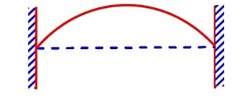Physics Waves
Get insights from 104 questions on Physics Waves, answered by students, alumni, and experts. You may also ask and answer any question you like about Physics Waves
Follow Ask QuestionQuestions
Discussions
Active Users
Followers
New answer posted
4 months agoContributor-Level 10
In Physics, we need to know that the phase angle tells us the position of a point within one cycle of a wave. That is measured in radians. It tells you how much a wave is ahead or, behind the other. On the other hand, the initial phase (or phase constant) is the phase angle at time t=0. It tells us where the wave begins with its oscillation cycle.
New answer posted
4 months agoContributor-Level 10
The speed of a transverse wave depends on the intrinsic properties of the medium it propagates through. These could be elastic and inertial properties. For a transverse wave on a string, we need to know factors such as tension (a common force) in the string, and its linear mass density.
New answer posted
4 months agoContributor-Level 10
Transverse waves can travel through solids or any medium that can withstand shearing strain. Fluids, including liquids and gases, cannot sustain shear force, so such types of mechanical waves cannot travel through them.
Longitudinal waves can travel through all elastic media that can sustain compressive strain. That means, these mechanical waves can travel through solids, liquids, and gases.
New answer posted
4 months agoContributor-Level 10
Sound waves and water waves are mechanical waves, which always require a medium to travel. Light, however, does not require a medium to propagate, as it is electromagnetic. Light can travel through vacuum, while sound and water waves cannot travel through vacuum.
New answer posted
4 months agoContributor-Level 10
A beat wave arises due to constructive and destructive interference between two sound waves. These two frequencies have nearly equal frequencies but never the same. The resulting amplitude envelope oscillates at the beat frequency.
New answer posted
4 months agoContributor-Level 10
Beats form when two harmonic waves of nearly equal frequencies and identical amplitudes travel in the same direction, whic allows the superposition of waves.
New answer posted
4 months agoContributor-Level 10
Beat frequency is the rate of amplitude modulation we hear when two wave frequencies, f1 and f2 interfere. It's given by |f1-f2|. It represents how fast the loudness oscillates over time.
Taking an Exam? Selecting a College?
Get authentic answers from experts, students and alumni that you won't find anywhere else
Sign Up on ShikshaOn Shiksha, get access to
- 66k Colleges
- 1.2k Exams
- 680k Reviews
- 1800k Answers


